Observing with WASP2 at the Caltech Submillimeter
Observatory (CSO)
March 2004
Also available: Life on Mauna Kea, inside a WASP
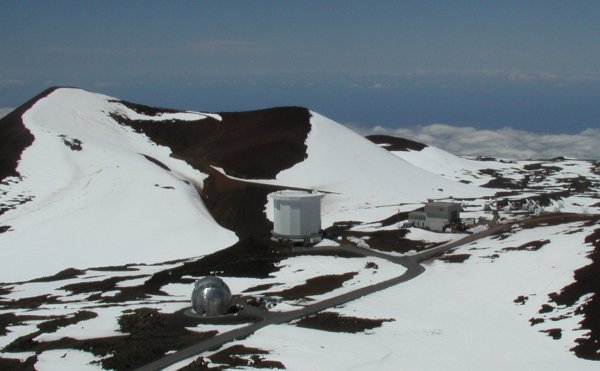
We arrived about a week after a big snowstorm. Times like this
explain how the mountain got its name: Mauna Kea translates to "White
Mountain." The silver ball at the left is the CSO enclosure; the
white cylinder contains the James Clerk Maxwell telescope, and the flock
of small telescopes at the right is the Smithsonian's Sub-Millimeter
Array. These telescopes are in "Submillimeter Gulch," about 13,500
feet above sea level on the big island of Hawaii. The summit of
Mauna Kea is about 400 feet higher.
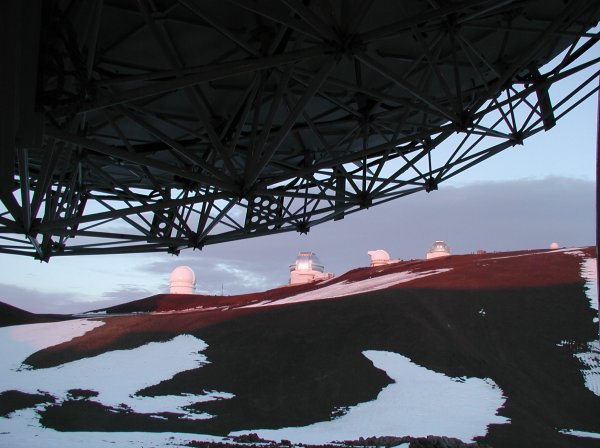
A view from inside the CSO dome as we open for the first night's
observing - the setting sun illuminates the telescopes visible below the
CSO antenna's back-up structure truss. From left to right, the
Canada-France-Hawaii Telescope, Gemini North, the University of Hawaii
88" Telescope, the United Kingdom Infrared Telescope, and the Air Force
24".
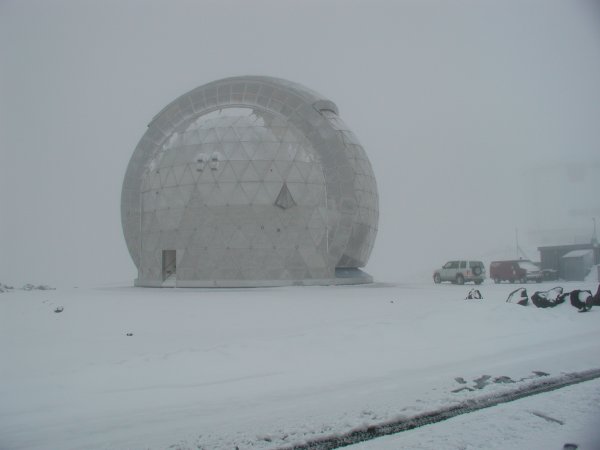
Of course, the weather isn't always perfect, and this is unfortunately
typical for most of this observing run. We can only observe the
first few nights; after that the road is too icy at night to stay at the
telescope safely even if we could open the enclosure to try to observe.
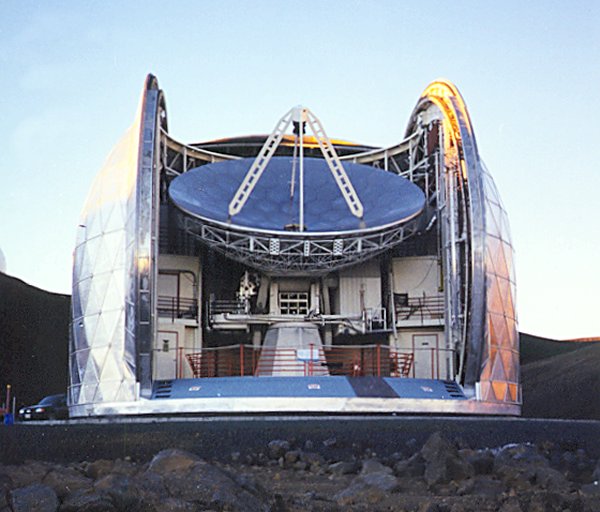
A picture from another observing run shows what the telescope should
look like at sunset, with the enclosure open instead of closed.
It's normally closed during the day to keep the sun from heating and
distorting the telescope mirror -- and, of course, in bad weather to
keep the telescope and instruments dry. We set up our equipment
on the platform behind the telescope, just at the level of the top of
the conical support pier. The "dish" is 10.4 m (34 foot) diameter
reflector that matches the desired shape of a parabola within about a
thousandth of an inch. Light reflects from the dish, then a small
mirror held near the top of the white set of "feed legs" that rise from
the dish, passes through the hole in the center of the dish, and then
reflects a few more times from some mirrors visible in some of the
following photos before it is finally concentrated on our mixer.
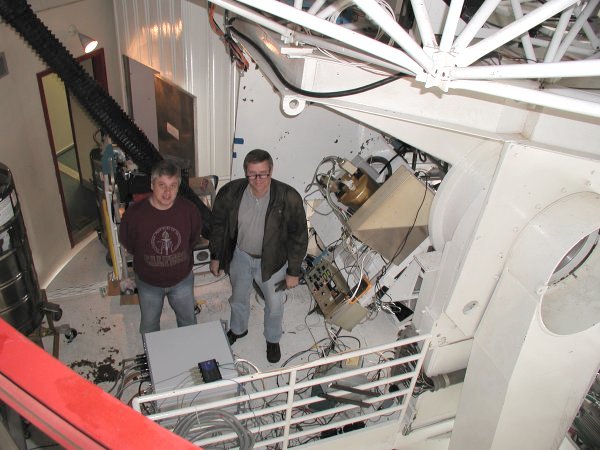
Bad weather or not, Frank and Jonas set up the receiver on the back of
the telescope. The receiver sits at the Cassegrain focus of the
telescope, below the antenna, nestled between the telescope's elevation
bearings. The WASP spectrometers are stacked by the railing just
in front of Jonas, not too far from the receiver. More of the
telescope optics are in the white framework below the receiver.
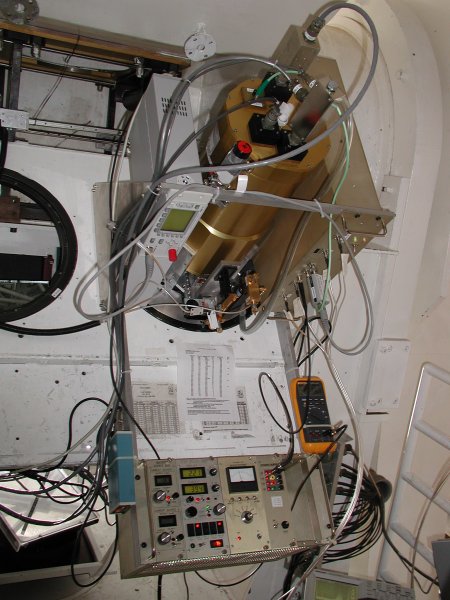
A better look at the receiver. The gold-colored cylinder is the
cryostat, a vacuum bottle that holds the liquid nitrogen and liquid
helium to cool our mixer to 4 K. The receiver has an output
band 10 GHz wide that can be tuned anywhere between 200 and 300
GHz. Electronics clustered around the cryostat control the
receiver's electronics and separate the wide bandwidth coming from the
receiver into four bands for our four WASP spectrometers.
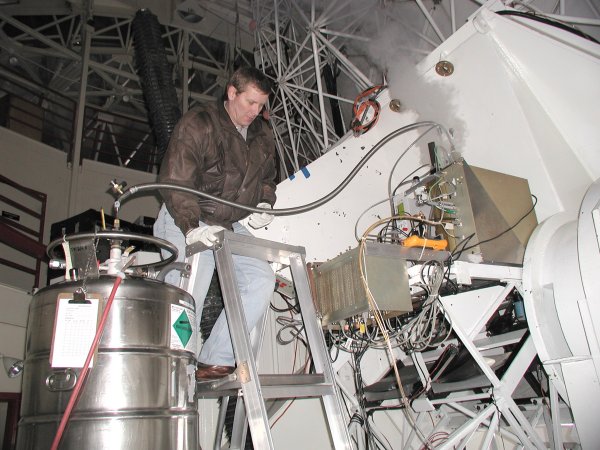
Once a day the cryostat has to be filled with liquid helium from the
big silver storage dewar. The plume of vapor coming from the
receiver is cold helium gas.
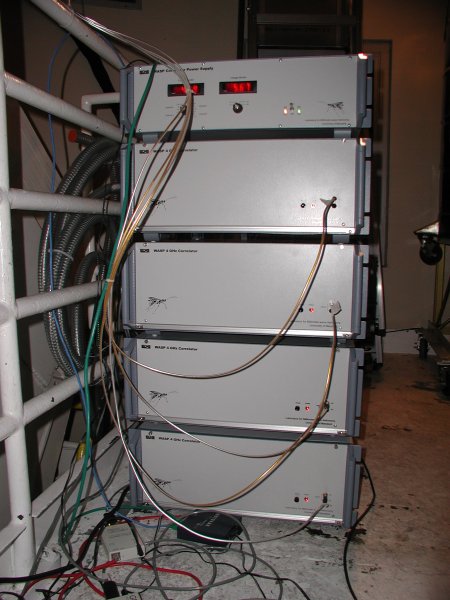
A good look at the fronts of the spectrometers. Here's our stack
of four WASP spectrometers, power supply on the top. The four
signals from the receiver come down cables and feed into connectors on
the the spectrometer front panels.
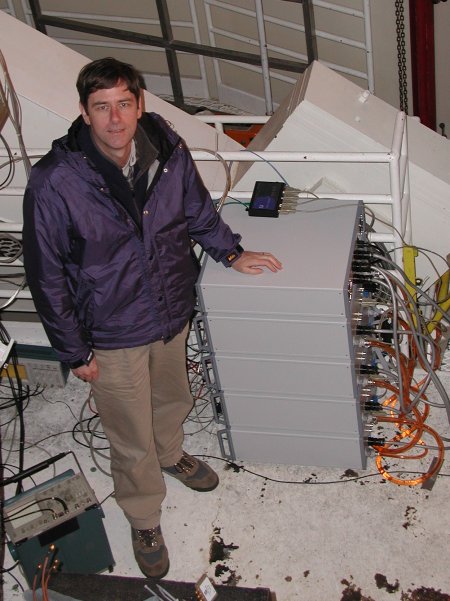
Andy's quite happy to have all of the spectrometers at the telescope
and working well. The orange hoses coming from the spectrometers'
back carry a mix of water and antifreeze to keep the spectrometers cool
in the thin air at 13,500 feet.
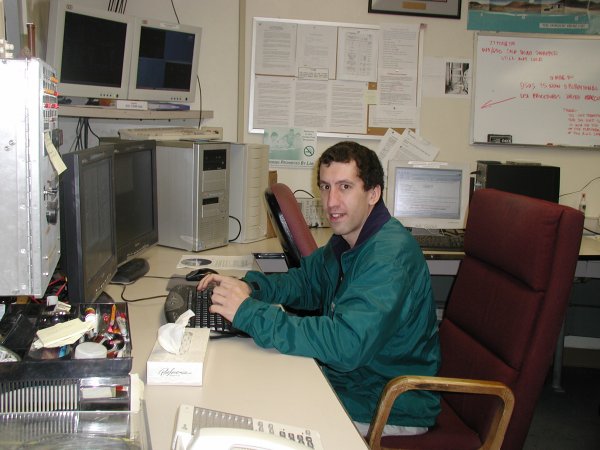
Kevin is working at the main observer's console in the control
room. This room is just behind the telescope, steps away from the
receiver and spectrometers. Nothing glamorous: just a windowless
room full of computers and screens, but it is sometimes warm and has the
stereo and a coffee maker.
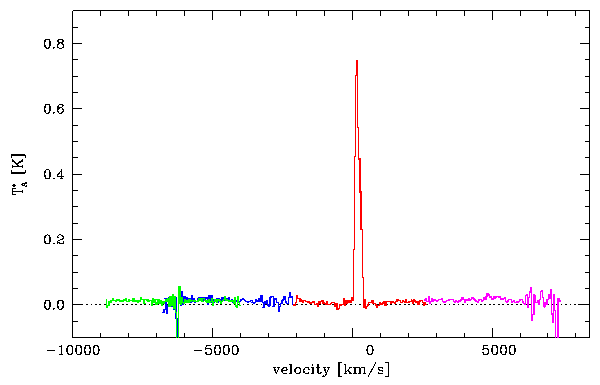
This is what we "see" with the telescope and our receiver and
spectrometer: a spectrum, or plot of intensity versus frequency (here
translated to velocity toward or away from us). The spectrum here
is a taste of what we're ultimately after -- a spectrum that covers a
bandwidth about ten times wider than a normal radio astronomy
spectrometer. The object we observed is the starbutst galaxy M82
in the carbon monoxide J=2-1 spectral line near 230 GHz. In this
plot, data from each of the four spectrometers has a separate color,
and we haven't made any corrections for tilts or offsets. We'll
eventually get the green part of the spectrum to link to the end of the
spectrum instead of having such a large overlap with the blue
part. The big negative spike near -6300 km/s is a stray signal
near 6 GHz from instruments in the observatory, and the receiver
doesn't work that well above 6000 km/s. Still work to do, but
it's quite promising.
Links to more information on: wideband
spectrometers, inside a WASP, life on Mauna Kea
Questions or comments? Please contact Andrew Harris.










